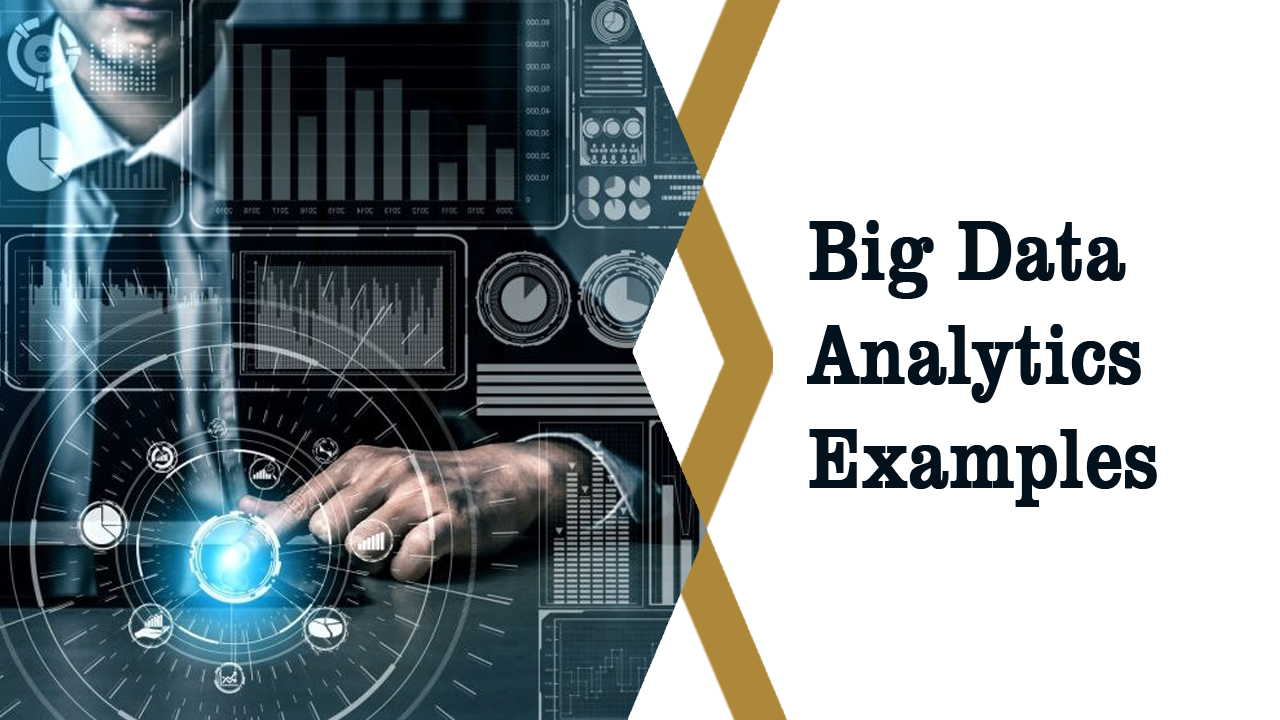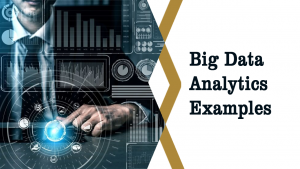Introduction Big Data Analytics Examples
Big Data Analytics is a process of analyzing and interpreting large and complex datasets to extract insights and make better business decisions. It has become an essential tool for businesses and organizations across various industries to optimize their operations, improve customer experiences, and drive growth.
In this article, we will discuss some examples of how Big Data Analytics is being used in different industries to achieve their goals.
Retail Industry Big Data Analytics Examples
1. Customer Segmentation: Retailers are using Big Data Analytics to segment their customers based on various factors such as demographics, purchase history, and browsing behavior. By analyzing this data, they can create personalized offers and promotions for each segment, which improves customer satisfaction and retention.
2. Inventory Management: Big Data Analytics helps retailers optimize their inventory management by analyzing historical sales data, trends, and demand patterns. By accurately forecasting demand, retailers can reduce stockouts and overstocking, which leads to increased sales and reduced costs.
3. Fraud Detection: Retailers are using Big Data Analytics to detect and prevent fraud by analyzing customer behavior and transactional data. By identifying unusual patterns or anomalies, they can prevent fraudulent activities and protect their customers.
Healthcare Industry
1. Patient Monitoring: Big Data Analytics is used to monitor patients’ health conditions and provide real-time feedback to healthcare professionals. By analyzing various types of data, such as patient records, medical devices, and wearable sensors, healthcare professionals can identify potential health risks and provide proactive care.
2. Drug Development: Big Data Analytics helps pharmaceutical companies in drug discovery and development by analyzing vast amounts of data from clinical trials, research studies, and medical journals. By identifying patterns and relationships between different data points, they can develop more effective drugs and treatments.
3. Disease Outbreak Prediction: Big Data Analytics is being used to predict disease outbreaks by analyzing social media data, search queries, and other sources of data. By identifying patterns and trends, healthcare professionals can prepare and respond to potential outbreaks before they occur.
Finance Industry
1. Fraud Detection: Big Data Analytics is used in the finance industry to detect and prevent fraud by analyzing transactional data, customer behavior, and other types of data. By identifying unusual patterns or anomalies, financial institutions can prevent fraudulent activities and protect their customers.
2. Risk Management: Big Data Analytics helps financial institutions manage risk by analyzing historical data and identifying potential risks. By accurately forecasting potential risks, financial institutions can take proactive measures to reduce their exposure.
3. Customer Segmentation: Financial institutions are using Big Data Analytics to segment their customers based on various factors such as demographics, transaction history, and risk profile. By analyzing this data, they can create personalized offers and promotions for each segment, which improves customer satisfaction and retention.
Sports Industry
1. Performance Analysis: Big Data Analytics is being used in the sports industry to analyze player performance and identify areas for improvement. By analyzing data from sensors and wearable technology, coaches and analysts can provide personalized training programs for each player.
2. Fan Engagement: Big Data Analytics is being used to improve fan engagement by analyzing data from social media, ticketing systems, and other sources. By understanding their fans’ preferences and behavior, sports organizations can create more engaging content and experiences.
3. Sponsorship Optimization: Big Data Analytics helps sports organizations optimize their sponsorship deals by analyzing data on sponsorships, advertising, and fan behavior. By identifying the most effective sponsorship opportunities, sports organizations can maximize their revenue and return on investment.
Conclusion Big Data Analytics Examples
In conclusion, Big Data Analytics is being used across various industries to improve operations, optimize resources, and drive growth. By analyzing large and complex datasets, organizations can gain valuable insights that lead to better decision-making and better business outcomes. These examples demonstrate the importance of Big Data Analytics.
The retail industry is a prime beneficiary of big data analytics, leveraging vast amounts of data to enhance customer experiences, optimize operations, and drive growth. By harnessing insights from data, retailers can make more informed decisions, tailor their offerings, and stay ahead in a competitive market. Here are some compelling examples of how big data analytics is transforming the retail industry:
1. Personalized Shopping Experiences
Retailers are increasingly using big data to offer personalized shopping experiences. By analyzing customer data from various touchpoints, including purchase history, browsing behavior, and social media interactions, retailers can create tailored recommendations and promotions.
Example: Amazon’s recommendation engine is a notable example. The platform uses sophisticated algorithms to analyze users’ past purchases, search history, and browsing patterns to suggest products that align with their preferences. This personalized approach not only enhances the shopping experience but also boosts sales through targeted recommendations.
2. Inventory Management and Optimization
Big data analytics helps retailers manage inventory more efficiently by predicting demand and optimizing stock levels. Advanced analytics can forecast which products are likely to be popular based on historical data, seasonal trends, and real-time sales data.
Example: Walmart uses big data to optimize its supply chain and inventory management. By analyzing sales patterns, weather data, and regional trends, Walmart can forecast demand more accurately and ensure that its stores are stocked with the right products at the right times. This approach helps reduce stockouts and overstock situations, ultimately improving customer satisfaction and profitability.
3. Dynamic Pricing Strategies
Dynamic pricing is another area where big data analytics is making a significant impact. Retailers use real-time data to adjust prices based on various factors such as demand, competition, and inventory levels.
Example: Airlines and online travel agencies often use dynamic pricing models. By analyzing data on booking patterns, competitor pricing, and customer behavior, these companies adjust their prices in real-time to maximize revenue and optimize occupancy rates.
4. Customer Sentiment and Feedback Analysis
Retailers leverage big data to analyze customer sentiment and feedback from multiple sources, including online reviews, social media, and customer service interactions. This analysis helps retailers understand customer perceptions, identify pain points, and improve their products and services.
Example: Brands like Nike use sentiment analysis tools to monitor social media conversations and online reviews. By understanding how customers feel about their products and brand, Nike can make informed decisions about product development, marketing strategies, and customer engagement.
5. Location-Based Marketing
Big data analytics enables retailers to deliver location-based marketing messages and offers to customers. By analyzing data from GPS-enabled devices, mobile apps, and in-store beacons, retailers can target customers with relevant promotions based on their current location.
Example: Starbucks uses location-based marketing to engage with customers. Through its mobile app, Starbucks sends personalized offers and promotions to users based on their proximity to a store. This approach encourages customers to visit nearby locations and drives foot traffic to the stores.
6. Fraud Detection and Prevention
Big data analytics is crucial for detecting and preventing fraud in the retail industry. By analyzing transaction data, patterns, and anomalies, retailers can identify suspicious activities and mitigate fraud risks.
Example: Payment processors and credit card companies use big data analytics to detect fraudulent transactions. By analyzing patterns in transaction data, such as unusual spending behavior or geographic inconsistencies, these systems can flag potentially fraudulent activities and take preventive measures.
7. Supply Chain Optimization
Optimizing the supply chain is essential for retailers to ensure efficient operations and timely delivery of products. Big data analytics helps retailers streamline their supply chains by providing insights into supplier performance, logistics, and inventory management.
Example: Target uses big data to optimize its supply chain operations. By analyzing data from suppliers, distribution centers, and sales transactions, Target can identify inefficiencies, improve logistics, and enhance overall supply chain performance.
8. Churn Prediction and Retention
Retailers use big data analytics to predict customer churn and implement retention strategies. By analyzing customer behavior and transaction history, retailers can identify customers who are at risk of leaving and take proactive measures to retain them.
Example: Subscription-based retailers, such as Netflix, use churn prediction models to understand which customers are likely to cancel their subscriptions. By analyzing viewing patterns, engagement levels, and customer feedback, Netflix can develop targeted retention strategies to keep subscribers engaged and reduce churn rates.
9. In-Store Analytics
In-store analytics involves using data collected from various sensors and devices to understand customer behavior within physical stores. This includes tracking foot traffic, dwell times, and interactions with displays.
Example: The clothing retailer, Zara, uses in-store analytics to optimize store layouts and product placements. By analyzing data on customer movements and interactions within the store, Zara can make informed decisions about store design and product placement to enhance the shopping experience and drive sales.
10. Product Development and Trend Analysis
Big data analytics helps retailers identify emerging trends and develop new products based on customer preferences and market demands. By analyzing sales data, social media trends, and market research, retailers can stay ahead of consumer trends and innovate their product offerings.
Example: Procter & Gamble (P&G) uses big data to drive product development and innovation. By analyzing consumer behavior, preferences, and feedback, P&G can identify market trends and develop products that meet evolving customer needs.
Conclusion
Big data analytics is revolutionizing the retail industry by providing valuable insights that drive decision-making, enhance customer experiences, and optimize operations. From personalized shopping experiences to supply chain optimization, retailers are leveraging data to stay competitive and meet the ever-evolving demands of consumers. As technology continues to advance, the potential applications of big data in retail will only grow, offering new opportunities for innovation and growth.

